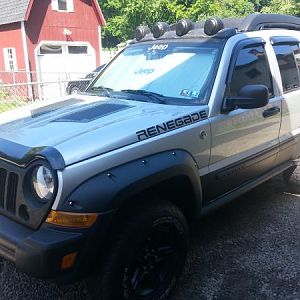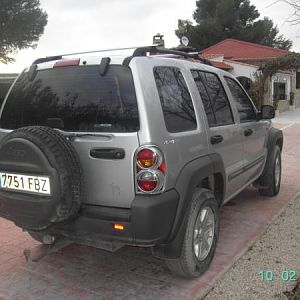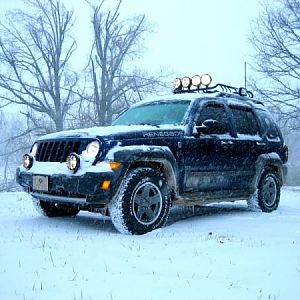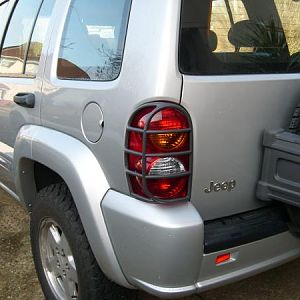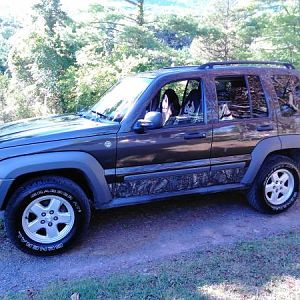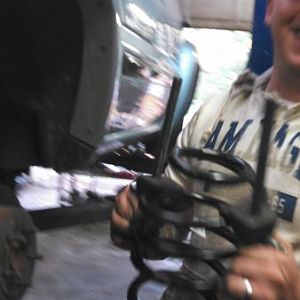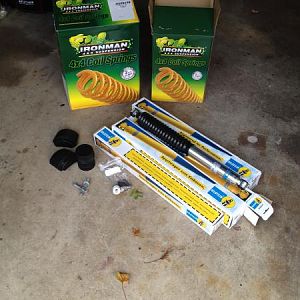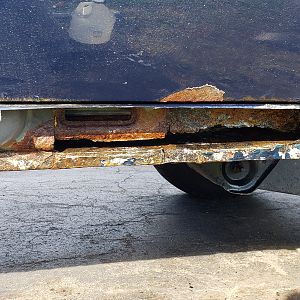JeepSpace
New Member
- Joined
- May 9, 2022
- Messages
- 22
- Reaction score
- 5
Hello All,
I've had an ongoing issue with my EVAP system that no one can seem to pin down. I've worked with 3 mechanics, for various prices, expertise, and other reasons, and still no luck. Here's the History.
Is the Canister the next best thing?
Could it be the pump, the gas sleeve, or something else?
I'm still intermittently throwing both Small and Large Evap Codes, as well as the GASCAP light is on almost all the time, but not quite all, and it still does respond to Cycling the key; that is if I cycle the key once, it never chokes out.
I've wasted so much time, energy, and money on this issue. I would have loved to find someone who knew how to fully diagnose the issue in the first place and hone in on the correct problem. In any case, I'm so appreciative of any help anyone has to offer, suggestions, or to steer me in the right direction. As well, I'm hoping this thread can serve to help anyone else with a similar issue.
I've had an ongoing issue with my EVAP system that no one can seem to pin down. I've worked with 3 mechanics, for various prices, expertise, and other reasons, and still no luck. Here's the History.
- Noticed the vehicle would choke out and have trouble starting after driving a few hours and then stopping to fill up for gas. Vehicle would choke out while starting, but if I tried a 2nd time it would start. Soon after, it started with the Check Engine light and an EVAP code. Came back "Small Evap Leak" code.
- Mechanic A suggests it could be Purge Solenoid, Evap Canister, or Gas Cap. Suggests I should start with the Cap as it's the cheapest test and fix. Replace OEM Cap from dealer. Problem persists.
- Replaced Purge Solenoid by battery. Problem persists.
- Reset Codes. Codes and check engine light come and go. See GASCAP light intermittently now comes and goes.
- Mechanic B runs codes and gets "Large Evap Leak." Suggests it could be Evap Leak Detection Pump, Evap Canister, or leaks in lines, connections, hoses. Suggests doing Smoke Vapor Evap test first to check for leaks before buying more parts. He also suggested that if I cycled the key when I had trouble starting, to build pressure in pump/system, and then started, that it should help. This was confirmed. Every time I had trouble starting, if I cycled key once first, listened for gas pump to fire and build pressure in the system, and then tried to start it, it would start right up and not choke out.
- Do Smoke Leak Test and physically inspect all outer components of system. Results find no leaks at all. Mechanic B suggests it could still be something internal to Leak Detection Pump or Evap Canister, and to start with the Pump since it is the cheaper fix. He also suggests it could be Gas Pump, but doesn't think that's the issue or I would be seeing other symptoms.
- Mechanic A replaces Evap Leak Detection Pump. Problem persists. Mechanic A suggests that sometimes it's still a bad gas caps and to try another.
- Replace Cap with an after market cap. Problem persists.
- At this point, I'm still getting random Small Leak and Large Leak codes as well as the GASCAP code, and I am also smelling fumes every once and a while when I'm towing and accelerating hard to keep up speed while going up steep hills. The fumes usually go away after 15-30 minutes and or when the load calms down. Both the codes, check engine, GASCAP, and fumes all come and go. Sometimes it's a week or 2 with no issues or symptoms, and then they will just pop up again. Then it can go another week or so with no codes or issues; so very intermittent. The GASCAP light has become more regular, almost constant now.
- Take it to Mechanic C to see what he can find. Mechanic C says it's likely the Evap Leak Detection Pump Filter, but that because I didn't replace the Pump and Filter at same time, that the new Pump could be ruined. Suggests I replace Filter and now Pump again, making sure to do the filter first. He also suggests it could be the Fuel Pump or the Gas Tank Sleeve, but that the sleeve should have showed up in the Smoke test.
- Replace Evap Leak Detection Pump Filter and then the Pump again..... Problem persists.
Is the Canister the next best thing?
Could it be the pump, the gas sleeve, or something else?
I'm still intermittently throwing both Small and Large Evap Codes, as well as the GASCAP light is on almost all the time, but not quite all, and it still does respond to Cycling the key; that is if I cycle the key once, it never chokes out.
I've wasted so much time, energy, and money on this issue. I would have loved to find someone who knew how to fully diagnose the issue in the first place and hone in on the correct problem. In any case, I'm so appreciative of any help anyone has to offer, suggestions, or to steer me in the right direction. As well, I'm hoping this thread can serve to help anyone else with a similar issue.


![IMG 20120716 203256[1]](/data/xfmg/thumbnail/5/5710-513dc30f513b0848283a5a37cc3bfdac.jpg?1623784626)
